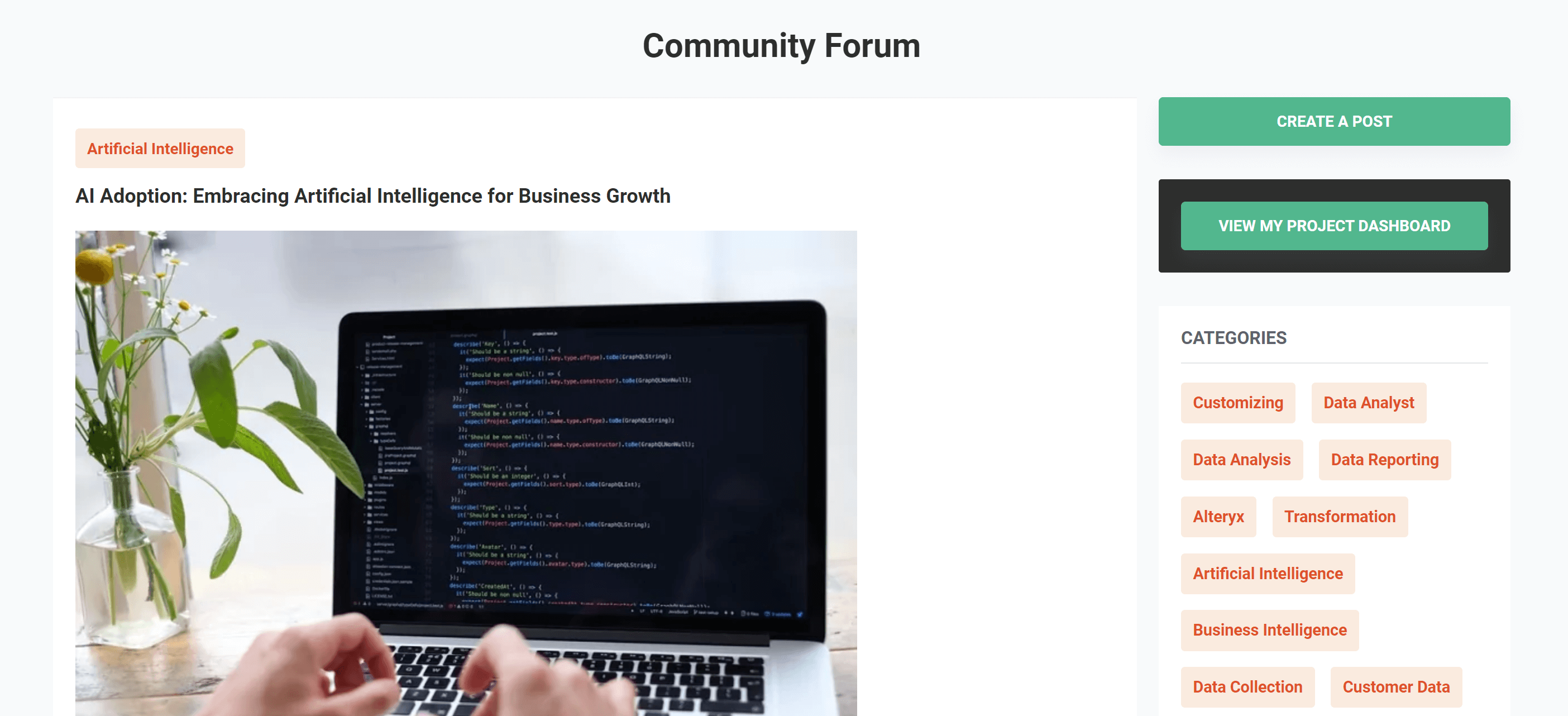How Data-Driven Decision-Making Transforms Internal Business Operations

Table of Contents
1. The Rise of Data-Driven Organizations
2. Benefits of Data-Driven Decision Making
3. Building a Data-Driven Culture
4. Implementing Data-Driven Internal Changes
5. How Data Science Enhances Internal Change Management
6. Overcoming Challenges in Data-Driven Transformations
7. Conclusion
In today’s rapidly evolving business landscape, adapting to internal changes is essential for staying competitive. However, implementing these changes successfully requires more than intuition , it demands data-driven decision-making. This blog explores how organizations can leverage data to effectively justify and execute internal transformations. It covers the benefits of data-driven decision-making, strategies for fostering a data-centric culture, steps to implement data-backed changes, and the role of data science in optimizing internal processes.
The Rise of Data-Driven Organizations
A data-driven organization strategically utilizes data analysis to inform decision-making at every level. This approach involves investing in the collection, storage, and analysis of data, enabling objective, fact-based business decisions. Transitioning from traditional decision-making to data-led practices requires time and commitment, but the benefits are substantial. Companies that embrace data-driven strategies are better positioned to understand market trends, customer behaviors, and operational efficiencies, leading to more informed and successful internal changes.
“Decisions are no longer based on gut feeling, Data should be used to justify any changes. Data driven decisions are the future.” – Jadd Elliot Dib
Benefits of Data-Driven Decision Making
Implementing a data-driven approach offers numerous advantages:
- Objective Decision-Making: Data provides an unbiased foundation for decisions, reducing reliance on gut feelings and personal biases. This objectivity ensures that changes are based on factual evidence, leading to more reliable outcomes.
- Improved Accuracy and Insights: Analyzing data uncovers patterns and trends that might otherwise go unnoticed. These insights enable organizations to predict future scenarios and make proactive adjustments.
- Risk Mitigation: Data analysis helps identify potential risks before they escalate. By understanding these risks early, companies can develop strategies to mitigate them effectively.
- Enhanced Strategic Planning: Data-driven insights inform long-term strategies, ensuring that organizational goals align with market realities and internal capabilities.
- Increased Customer Understanding: Data reveals customer preferences and behaviors, allowing for personalized experiences and improved satisfaction.
Building a Data-Driven Culture
To successfully implement data-driven internal changes, organizations must cultivate a culture that prioritizes data at every level:
1. Invest in Data Literacy
Empower employees with the skills to interpret and utilize data effectively. Training programs can enhance data literacy, enabling staff to make informed decisions based on accurate interpretations of data. This investment ensures that data-driven decision-making becomes a standard practice across the organization.
2. Encourage Data-Led Innovation
Foster an environment where employees are encouraged to explore innovative uses of data. By promoting experimentation and supporting new ideas, organizations can discover unique solutions to challenges and identify opportunities for improvement.
3. Ensure Data Accessibility
Provide employees with access to relevant data and the tools necessary for analysis. This accessibility enables timely and informed decisions, as staff can readily obtain the information they need without unnecessary barriers.
4. Lead by Example
Leadership should model data-driven decision-making, demonstrating its value through their actions. When leaders prioritize data in their strategies, it sets a precedent for the rest of the organization to follow suit.
Implementing Data-Driven Internal Changes
When proposing internal changes, data serves as a powerful tool to justify and guide the transformation process:
1. Identify Areas for Improvement
Utilize data to pinpoint inefficiencies or areas where performance lags. For example, analyzing workflow data might reveal bottlenecks that, once addressed, could enhance productivity.
2. Set Measurable Goals
Define clear, data-driven objectives for the proposed changes. Measurable goals provide a benchmark for success and facilitate ongoing assessment. For instance, aiming to reduce project completion times by 15% within six months offers a tangible target to strive for.
3. Develop a Data-Backed Strategy
Craft a detailed plan outlining how data supports the proposed changes. This strategy should include resource allocation, timelines, and key performance indicators (KPIs) to monitor progress. A well-structured plan ensures that all stakeholders understand the rationale behind the changes and their expected impact.
4. Communicate with Stakeholders
Present data-driven evidence to stakeholders to gain their support. Transparency in sharing data fosters trust and facilitates smoother implementation of changes. Regular updates on progress, backed by data, keep stakeholders informed and engaged throughout the process.
5. Monitor and Adjust
Continuously track the impact of changes using data analytics. Be prepared to make data-informed adjustments to ensure the desired outcomes are achieved. This iterative approach allows organizations to respond to unforeseen challenges and optimize strategies in real time.
How Data Science Enhances Internal Change Management
Data science plays a transformative role in internal change management by enabling predictive analytics, automation, and deep insights into company performance. With advanced AI-driven algorithms, businesses can forecast potential roadblocks before they arise, making adjustments in real time. Moreover, machine learning models can analyze employee productivity, customer engagement, and operational efficiencies, providing actionable recommendations for process improvement.
Platforms like Pangaea X simplify access to skilled Freelance data professionals who can build customized analytics frameworks tailored to a company’s needs. Whether it’s workforce optimization, financial forecasting, or supply chain enhancements, data science empowers organizations to transition seamlessly toward smarter, more efficient operations.
Overcoming Challenges in Data-Driven Transformations
While the benefits are clear, transitioning to a data-driven approach can present challenges:
- Data Silos: Isolated data systems can hinder comprehensive analysis. Integrating data across departments ensures a holistic view, enabling more effective decision-making.
- Resistance to Change: Employees accustomed to traditional methods may resist new data-driven approaches. Addressing concerns through education and demonstrating the value of data can ease the transition.
- Data Quality Issues: Inaccurate or incomplete data can lead to misguided decisions. Implementing robust data governance practices ensures the reliability of data used in decision-making.
Conclusion
Embracing data-driven decision-making empowers organizations to justify and implement internal changes with confidence. By building a culture that values data, investing in the necessary tools and training, and strategically leveraging data insights, companies can navigate the complexities of transformation effectively.Data science is at the core of this evolution, offering advanced capabilities that refine internal processes and drive innovation. Businesses leveraging platforms like Pangaea X gain access to top-tier data scientists who provide the expertise required for data-backed change management. In an era where adaptability and informed decision-making are paramount, a data-driven approach is not just advantageous it is essential for sustained success.
Get your data results fast and accelerate your business performance with the insights you need today.



